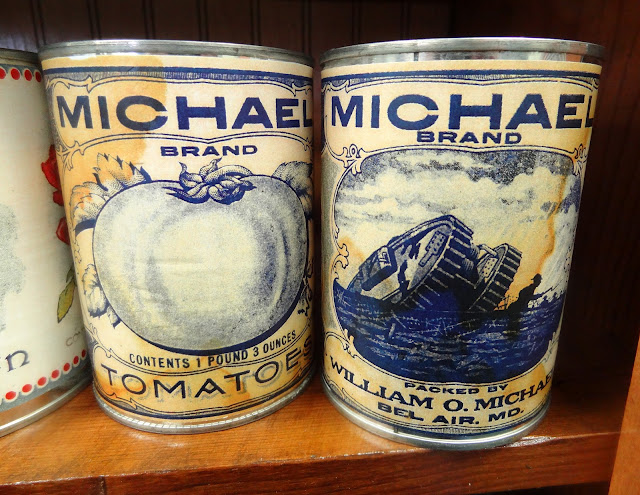Look at a few of them below to see why I was so fascinated. Notice that two of the cans have plainer labels with a tank and warships on them. These were manufactured during wartime. Also, be sure to read all of the label on the Real Value can. I don't think you will see anything like that in our stores today.
Note: Most cans are paired with a front and back picture of the label.
 |
| Notice the tank on the back of this can. This is from WWII days. |
 |
| Also, manufactured during WWII, notice the colorless label with the patriotic war theme. |
 |
| I think this is what you call real truth in advertising. |
 |
| You can tell there were cooked oysters in these cans because they have labels on them. Most oysters were not cooked and were shipped in cans on ice where the label would not survive. |
__________________________________________________________________________________
But Wait, There's More:
While Ward and Wally appreciated all of the labels, here's what they found most interesting.
Ward:
Early in the 20th century, canning was the primary method of preservation of food. Given the short time frame for harvest season, it was important to get crops to the canneries as fast as possible. Before transportation was cheap, fast and reliable, canneries were located nearly everywhere. Most towns of any size had a cannery, and many had two or four or even a dozen. Nowadays, we see many fewer, much larger canneries. Progress, I guess.
Wally:
Did you know that before 1906 weights didn't have to be put on the labels? Also, cans used to be made from three parts--a top, a bottom, and a cylinder. Not two parts like today. (Ward and I were not as interested in this. We are old enough to remember seeing three part cans.)






No comments:
Post a Comment
What do you think?